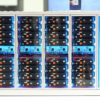On last Friday (21.06.2024), as temperatures soared to 40°C, Montenegro, Bosnia, and Croatia's Adriatic coast were plunged into darkness. A major power blackout disrupted life for millions, halting traffic, silencing cities, and leaving homes without electricity. The culprit? A malfunction of an interconnector in Montenegro, underscoring both the power and peril of interconnected grids.
What Happened?
The outage began in Montenegro, rapidly spreading to Bosnia, Croatia, and parts of Albania. Almost the entire area of Montenegro was without power, and major cities like Sarajevo, Banja Luka, and Mostar were left in the dark. The heatwave added to the strain, as temperatures approached unbearable highs. For many, the day became a struggle against the stifling heat, with air conditioning units rendered useless and refrigerated goods quickly spoiling.
Authorities and power utilities scrambled to restore services, highlighting the interconnected nature of modern power systems. But this incident raises important questions about the balance between the advantages and risks of such interconnections.
The Benefits of International Interconnection
Interconnected power grids offer numerous advantages that have driven their adoption worldwide. Let's have a look into these benefits:
Enhanced Reliability
One of the most significant advantages of interconnected grids is the enhanced reliability they provide. When multiple regions are connected, they can share resources to balance supply and demand more effectively. For example, if one area experiences a sudden surge in demand or an unexpected drop in generation, it can draw power from neighbouring regions. This mutual support helps to prevent localized blackouts and ensures a more stable power supply.
Cost Efficiency
Interconnection also brings considerable economic benefits. By sharing infrastructure, countries can reduce redundancy and lower overall costs. Investments in large-scale power plants, transmission lines, and other infrastructure can be shared, leading to economies of scale. Furthermore, interconnected grids allow for more efficient utilization of existing resources, reducing the need for costly backup systems.
Renewable Integration
The push towards renewable energy sources like wind and solar has been a major driver of grid interconnection. These sources are inherently variable—solar power is only available during the day, and wind power fluctuates with weather conditions. An interconnected grid can help manage this variability by transferring surplus renewable energy from one region to another. For instance, excess solar power generated in a sunny region can be sent to areas with lower solar generation, maximizing the use of green energy and reducing reliance on fossil fuels.
The Risks and Challenges
While the benefits are compelling, interconnected grids are not without their challenges and risks. The recent blackout vividly illustrates the potential pitfalls:
Cascade Failures
One of the primary risks of interconnected grids is the potential for cascade failures. A problem in one part of the network can quickly spread, causing widespread outages. This was precisely the case in the recent incident, where a malfunctioning interconnector in Montenegro triggered a blackout that affected multiple countries. Such cascade failures can be difficult to predict and manage, underscoring the need for robust monitoring and rapid response systems.
Complexity in Management
Managing an interconnected grid is a complex task that requires seamless coordination between different regions and countries. Each area may have its own regulations, policies, and operational practices, making it challenging to maintain harmony. During emergencies, this complexity can slow down decision-making processes and complicate recovery efforts.
Political and Regulatory Hurdles
Interconnected grids often span multiple jurisdictions, each with its own regulatory framework. Aligning these regulations can be a daunting task, leading to delays and inefficiencies. Political differences and competing interests can further complicate matters, making it difficult to implement cohesive and effective strategies for grid management.
The Role of Decentralized Energy Storage
In light of these risks, decentralized energy storage presents a promising solution. By providing localized backup power, energy storage systems can enhance grid resilience and stability. Let's explore how:
Improved Resilience
Decentralized energy storage systems, such as home batteries, community storage facilities, and microgrids, can provide critical backup power during outages. These systems can operate independently of the central grid, ensuring that essential services remain operational even when the main power supply is disrupted. For example, during the recent blackout, homes and businesses equipped with battery storage systems would have been able to maintain power, mitigating the impact of the outage.
Peak Shaving and Load Balancing
Energy storage can also help manage peak demand and balance loads more effectively. By storing excess energy during periods of low demand and releasing it during peak times, storage systems can "shave" the peaks, reducing the strain on the grid. This load balancing capability is particularly valuable in interconnected grids, where fluctuations in supply and demand can have far-reaching effects.
Renewable Energy Support
Supporting the integration of renewable energy is another critical role of decentralized storage. By storing excess renewable energy when it is abundant and releasing it when needed, storage systems can smooth out the variability of renewable sources. This not only maximizes the use of green energy but also reduces reliance on fossil fuel-based power plants, contributing to a cleaner and more sustainable energy mix.
Future Prospects for Interconnected Grids
Despite the challenges, the future of interconnected grids remains promising. Advancements in technology, improved regulatory frameworks, and innovative solutions are paving the way for more resilient and efficient power systems. Here are a few key areas to watch:
Smart Grid Technology
The integration of smart grid technology can significantly enhance the management and operation of interconnected grids. Smart grids use advanced sensors, communication networks, and data analytics to monitor and control the grid in real-time. This enables more precise load balancing, faster fault detection, and more effective response to emergencies. As smart grid technology continues to evolve, it will play a crucial role in mitigating the risks associated with interconnected grids.
Cross-Border Collaboration
Effective cross-border collaboration is essential for the success of interconnected grids. Countries and regions must work together to harmonize regulations, share best practices, and coordinate responses to emergencies. Initiatives like the European Union's Energy Union aim to foster such collaboration, creating a more integrated and resilient energy market. Strengthening international partnerships will be key to overcoming the political and regulatory hurdles that currently hinder the development of interconnected grids.
Investment in Infrastructure
Investing in robust and resilient infrastructure is another critical factor. This includes upgrading transmission lines, enhancing grid interconnectors, and building more decentralized energy storage systems. Such investments will help to reduce the risk of cascade failures and ensure a more reliable power supply. Governments, utilities, and private investors must work together to secure the necessary funding and support for these infrastructure projects.
Takeaway
The recent blackout in Montenegro, Bosnia, and Croatia serves as a stark reminder of both the benefits and risks of interconnected power grids. While these grids offer enhanced reliability, cost efficiency, and support for renewable energy, they also come with challenges such as cascade failures, complexity in management, and political hurdles. By leveraging decentralized energy storage, smart grid technology, cross-border collaboration, and strategic investments in infrastructure, we can build a more resilient and efficient interconnected power system.
If you have any inquiries or need further information about our smart-grid and energy storage solutions, please do not hesitate to reach out Contact Us to us. We are here to assist you and welcome your valuable thoughts and comments.
Contact Us to us. We are here to assist you and welcome your valuable thoughts and comments.
Until then, keep shining bright like a solar panel on a sunny day!







All comments are moderated before being published. Inappropriate or off-topic comments may not be approved.